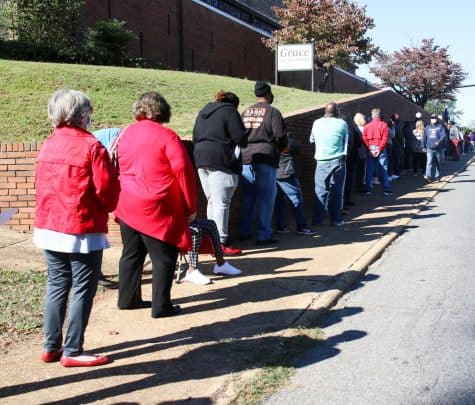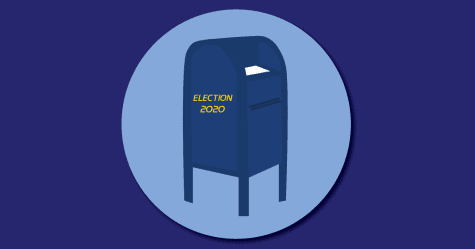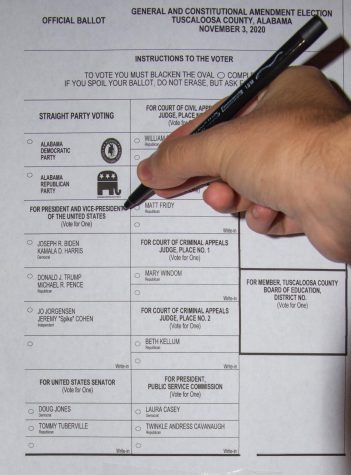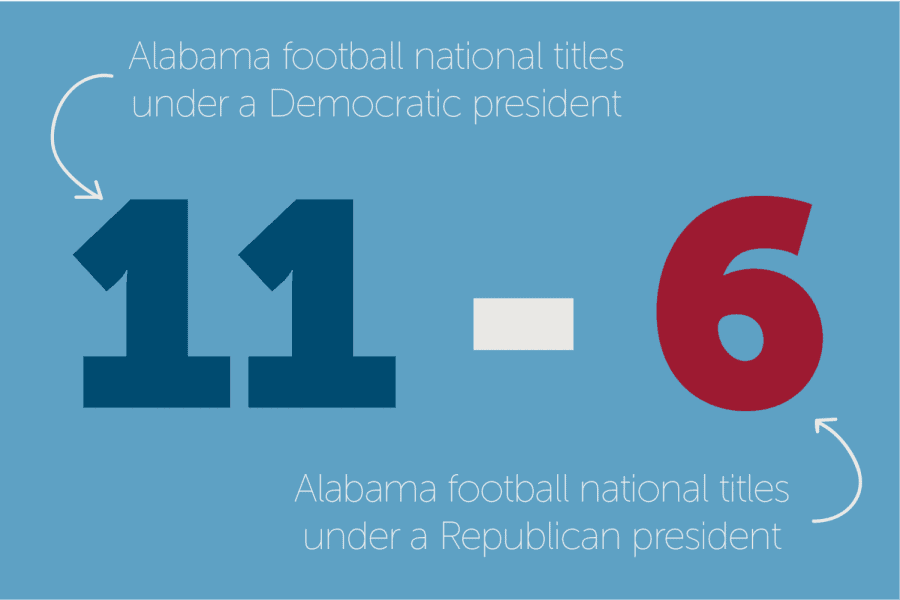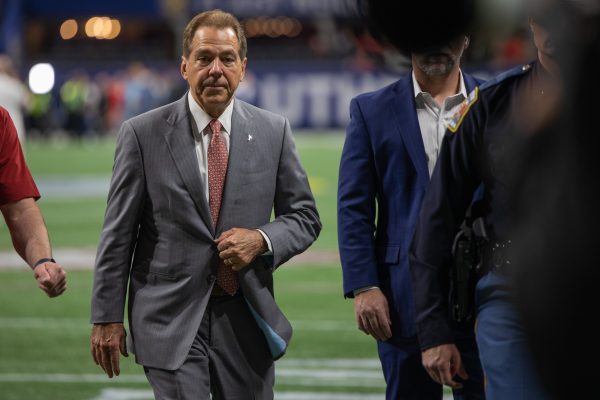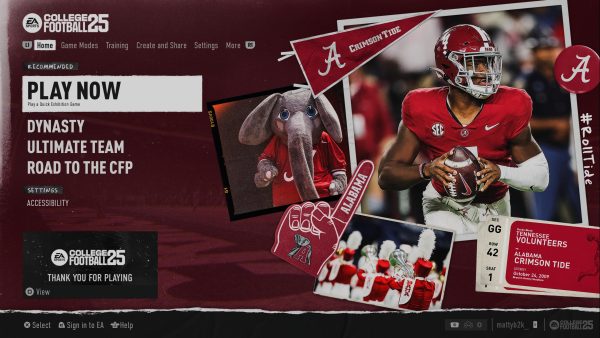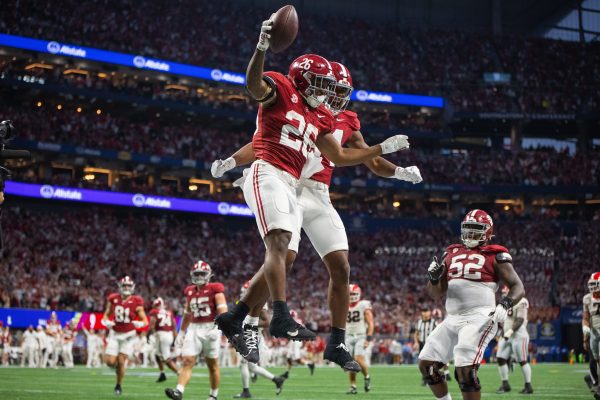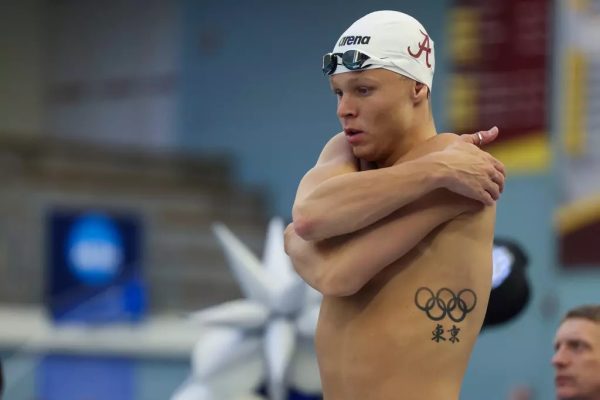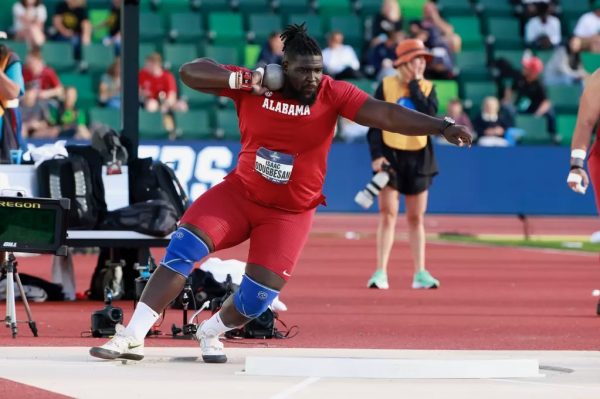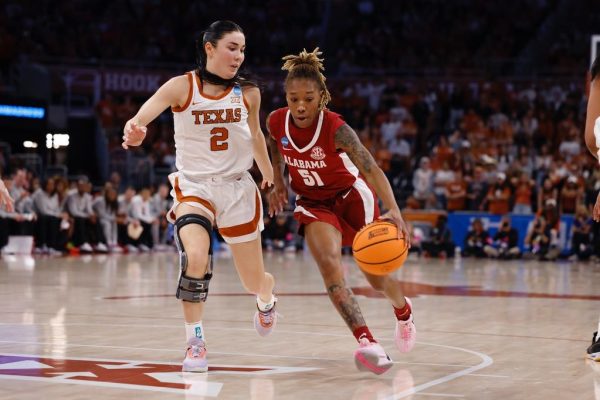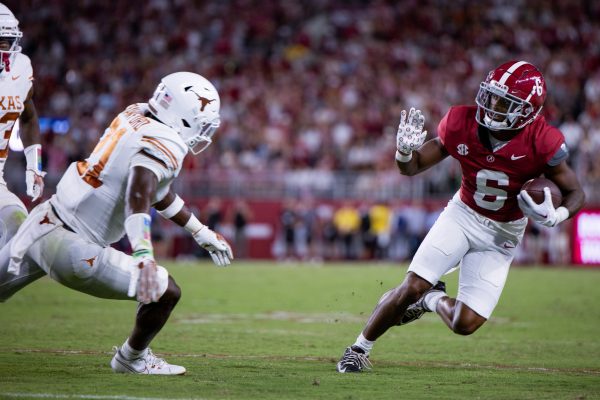Want to win the CFP next year? Maybe vote blue
In Alabama’s 17 national championship seasons, a Democrat has typically been in the Oval Office.
Read more from the Nov. 2 Election Edition.
Alabama has a tendency to win championships under Democratic presidents. From Frank Thomas’ run under Franklin D. Roosevelt to Nick Saban’s four latest under Barack Obama, here’s your breakdown of each Alabama title—including the controversial ones.

In the 1920s, Alabama students were hankering for a real fight song. As UA News reported in 2018, Alabama had shuffled through a few dry, somewhat choral tunes in the 1800s and early ’20s, but they had no real song for great victories. That, by the way, was mostly fine. Alabama hadn’t had much in the way of great victories until Wallace Wade arrived in Tuscaloosa in 1923. As head coach of the Alabama football squad, Wade took the team to their first-ever bowl game, a hard-fought Rose Bowl that inspired “Yea, Alabama” writer Epp Sykes to declare that “we’ll win then.” Though there was no official national champion declared at the end of the 1925 season, many organizations have retroactively awarded Alabama the title, including the NCAA. Under Wade, Alabama went on to be national champions in 1926 and 1930—two titles also recognized by the NCAA.

Though the NCAA recognizes Michigan for these two Roosevelt-era national titles, the University claims them proudly. In Frank Thomas’ fourth season as head coach, Alabama finished 1934 undefeated, but the team never came up against fellow South Conference school Tulane, which also went undefeated that year. As co-champion of the conference, only four national polls ranked Alabama at the top spot in the nation compared to Michigan’s nine polls. In 1941, Alabama stomached two shutout losses to Vanderbilt and Mississippi State and ended the year ranked No. 1 by only the Houlgate poll—Texas was declared champion by two polls that season; Michigan was heralded by 12.

Paul “Bear” Bryant’s five NCAA-recognized national championships began under Kennedy, in Bryant’s fourth season. The 1961 Alabama football team was no match for any of its regular season opponents, six of whom were shut out by Alabama. Fifteen pollsters listed Alabama as No. 1, putting the team far ahead of Ohio State, which was supported by two NCAA-approved polls.

Coach Bryant was responsible for the second of Alabama’s four pairs of back-to-back national titles. Under Johnson, who was still serving out a term originally meant for Kennedy, Bryant led the team to one-loss seasons in 1964 and 1965. In 1964, Alabama fell to Texas in a postseason battle at the Orange Bowl, making that Alabama team one of three national champions recognized by the NCAA for the season. The 1965 squad lost by a single point in its season opener against Georgia and later tied with Tennessee in the middle of the season, ending the year as a co-champion with Michigan State.

Bryant’s one win under a Republican president arrived in 1973, when his wishbone-style offense ran up the score on teams from California and Virginia Tech, who lost to the Tide by a whopping 71 points. According to Kirk McNair of 247 Sports, Bryant installed the triple-option offense ahead of the 1971 season—making Gary Rutledge, the junior quarterback who helmed Alabama’s 1973 championship team, Bryant’s first quarterback to have grown up under the new offensive training.

Always one to outdo himself, Bryant managed another set of back-to-back championships under Carter, the last Democrat to carry the state of Alabama. Players who doubled up on national titles with Bryant’s guidance included running backs Major Ogilvie and Billy Jackson, who went on to play for the Kansas City Chiefs. Both seasons ended in high marks from Associated Press pollsters and triumphant Sugar Bowl wins for the Crimson Tide. The NCAA also recognizes the University of Southern California as a 1978 national champion, but Alabama is the sole official winner of the 1979 contest. Alabama’s performance against Arkansas in the latter year’s Sugar Bowl also marked the debut of a head-to-toe Big Al costume.

1992 saw the Bowl Coalition introduce the first official national championship game as the elder President Bush campaigned for reelection and eventually made his way out of office. Former Alabama player Gene Stallings coached the Tide on to victory in the Sugar Bowl, where Alabama took on the Miami Hurricanes and secured the program’s legacy as the first to win a national championship game. Fun fact: the 1992 squad featured a stacked lineup of senior players, including Dabo Swinney.

Ah, yes: the beginning of the Saban era. Head coach Nick Saban arrived in Tuscaloosa at the tail end of the junior Bush’s presidency, but Alabama didn’t begin its National Championship resurgence until Obama’s first term. With Saban’s guidance, numerous quarterbacks, from John Parker Wilson to Tua Tagovailoa, have grown as sharp players and play callers in real time as Alabama fans watch from home. During the Obama administration, Saban scored three BCS titles and Alabama’s first championship in the modern College Football Playoff era. With championship wins over Texas, Louisiana State, Notre Dame and Clemson, Saban established himself as one of the best coaches in college football—a reputation that has gotten his former assistants into some big-time head coaching positions and even carried over into the tenure of one more president.

Alabama’s most recent title arrived at the top of President Trump’s current term. An overtime win over Kirby Smart’s Georgia Bulldogs ended with a dramatic Tua Tagovailoa 46-yard pass to wide receiver DeVonta Smith, who hauled the reception in for a game-winning touchdown. If Alabama makes it back to the playoff and final this year, a championship win could narrow the five-game gap between Democrats and Republicans when it comes to Alabama success stories. But for now, the numbers speak for themselves.

